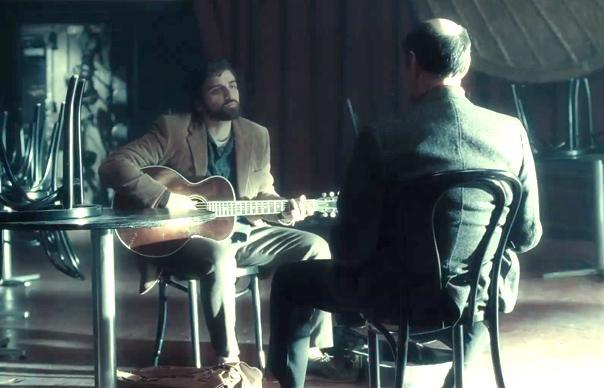But as the Coens tell it, they have been fans of folk music since their childhood. “Obviously we’re old, but not quite old enough to have first hand memories of that scene,” admits Ethan. “We were little kids in the provinces in the period of our movie. But as kids, we started listening to rock’n’roll, commercial folk and notably Bob Dylan.”
Coincidentally, both the Coens and Dylan hail from Minnesota; though as Joel is quick to point out, the suburbs of Minneapolis where they were raised were very different from Dylan’s hometown. “Hibbing, where Dylan’s from, could be Mars if you were living in Minneapolis,” he says. “The North Iron Range. It’s really the sticks. We were in the sticks being in Minneapolis, but that’s really the sticks. But growing up, we were aware that he was from Minnesota, and he’s also a Jew from Minnesota, and so are we.”

As Ethan admits, Dylan is “the elephant in the room” as far as their new film is concerned. Although Inside Llewyn Davis is set specifically just as Dylan arrives in Greenwich Village, his presence percolates through the film – whether through the use of an unreleased studio recording, “Farewell”, or in other, more subtle ways. “The Freewheelin’ Bob Dylan cover was the colour palette template for the movie,” reveals Joel. “Also the general feeling template for the movie in terms of grey, New York, slushy, no sunshine, cold.”
“It’s funny, when you picture the scene, it’s the winter,” says Ethan. “There’s also another really good picture, although it’s later, of Phil Ochs on Bleecker Street. It’s the same thing. It’s winter, and his shoulders are compressed.”
“There’s no way it would have seemed right shot in sunshine with leafy green trees in Greenwich Village,” Joel continues. “And also, the mood of the movie was meant to feel somewhat oppressive that way. It fits the story better.”
Dylan isn’t the only Greenwich Village veteran whose influence is evident in the film; a key reference point for the Coens was Dave Van Ronk’s memoir, The Mayor Of MacDougal Street. “It was a very small scene at the time,” says Ethan. “A little community that was in a very specific geographical place at a very specific time that was interested in this specific kind of music. But his depiction of the scene was so vivid, it was the most interesting of the things we read about that period. So we pilfered small, specific things.”
“And we made a significant part of Llewyn’s repertoire Van Ronk’s songs or arrangements of songs that he sang,” continues Joel. “We knew his music. You know, this music is all descended from the music in O Brother, Where Art Thou?. So it was music that was familiar to us. But particularly Dave Van Ronk’s music moved over into Llewyn in a comfortable way for us.”
“It’s something interesting about then especially – well, still now – but about people who defined themselves so specifically by the kind of music they played or were enthusiastic about,” adds Ethan. “Van Ronk started out as a Dixieland jazz guy and switched over to being a folk musician because, small as the money was in folk it was better than being a player of Dixieland jazz. That’s interesting: people deriving their identities from their music.”
“There’s always ironies in there,” observes Joel. “There’s weird things any time you get into issues of authenticity in this music. It’s a very murky and funny area. You have guys like Elliot Adnopoz, the son of a neurosurgeon from Queens, calling himself Ramblin’ Jack Elliot…”
“That’s something that the Van Ronk book is actually kind of funny about,” notes Ethan. “Dave himself was alive to the idea that there was something ridiculous about being worshipful at the shrine of authenticity. But what’s also interesting is that the scene before Dylan was primarily about people who considered themselves preservationists, not writers. It’s the source, rather than what you make of it.”
“It was also interesting to us that Llewyn have a small degree of ambivalence about that and the music itself,” says Joel. “In one scene in the movie, we see him heckle a woman performer in the Gaslight. The irony is she representative of the true authenticity, she’s the real thing, the person who comes in from Appalachia with the autoharp and is singing the songs that she has been singing since she was a baby and go back further, so you know…”


